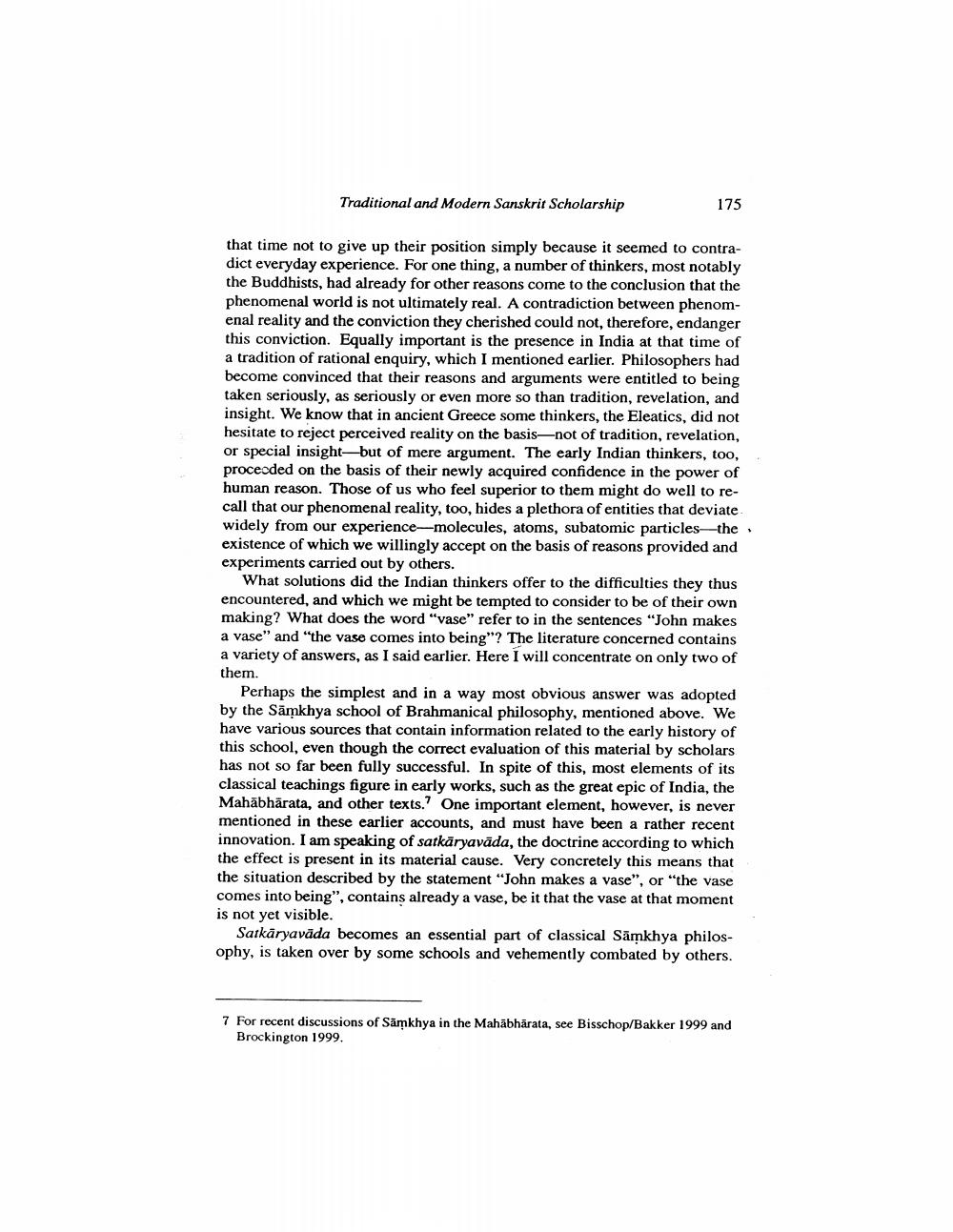________________
Traditional and Modern Sanskrit Scholarship
175
that time not to give up their position simply because it seemed to contradict everyday experience. For one thing, a number of thinkers, most notably the Buddhists, had already for other reasons come to the conclusion that the phenomenal world is not ultimately real. A contradiction between phenomenal reality and the conviction they cherished could not, therefore, endanger this conviction. Equally important is the presence in India at that time of a tradition of rational enquiry, which I mentioned earlier. Philosophers had become convinced that their reasons and arguments were entitled to being taken seriously, as seriously or even more so than tradition, revelation, and insight. We know that in ancient Greece some thinkers, the Eleatics, did not hesitate to reject perceived reality on the basis—not of tradition, revelation, or special insight—but of mere argument. The early Indian thinkers, too, proceoded on the basis of their newly acquired confidence in the power of human reason. Those of us who feel superior to them might do well to recall that our phenomenal reality, too, hides a plethora of entities that deviate widely from our experience-molecules, atoms, subatomic particles—the existence of which we willingly accept on the basis of reasons provided and experiments carried out by others.
What solutions did the Indian thinkers offer to the difficulties they thus encountered, and which we might be tempted to consider to be of their own making? What does the word "vase" refer to in the sentences “John makes a vase" and "the vase comes into being"? The literature concerned contains a variety of answers, as I said earlier. Here I will concentrate on only two of them.
Perhaps the simplest and in a way most obvious answer was adopted by the Samkhya school of Brahmanical philosophy, mentioned above. We have various sources that contain information related to the early history of this school, even though the correct evaluation of this material by scholars has not so far been fully successful. In spite of this, most elements of its classical teachings figure in early works, such as the great epic of India, the Mahābhārata, and other texts. One important element, however, is never mentioned in these earlier accounts, and must have been a rather recent innovation. I am speaking of satkāryavāda, the doctrine according to which the effect is present in its material cause. Very concretely this means that the situation described by the statement "John makes a vase", or "the vase comes into being", contains already a vase, be it that the vase at that moment is not yet visible.
Sarkaryavāda becomes an essential part of classical Sāmkhya philosophy, is taken over by some schools and vehemently combated by others.
7 For recent discussions of Samkhya in the Mahabharata, see Bisschop/Bakker 1999 and
Brockington 1999.




